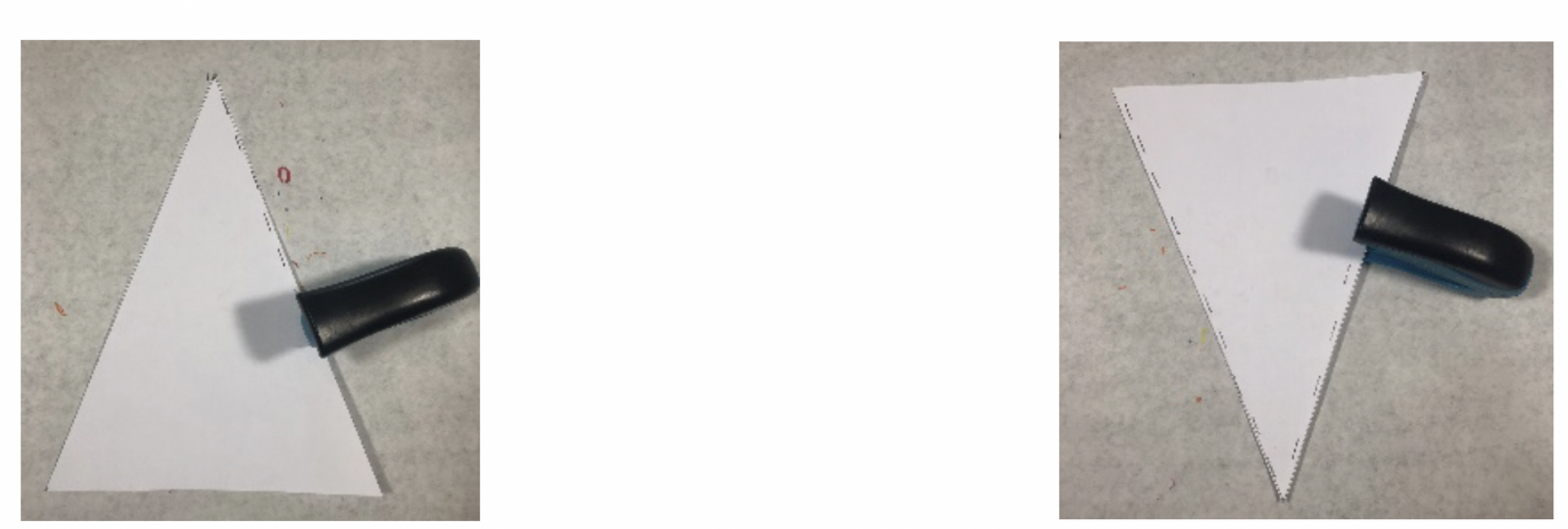Students will observe the concept of visual scale then create a pizza slice that is extra-large in scale. Recommended for 2nd Graders.
Form: a three-dimensional object that has height, length, width, and depth.
Shape: a flat, two-dimensional (length, width) area enclosed by a line.
Contrast: refers to the arrangement of opposite elements, or using very different qualities next to each other to create visual interest, excitement and drama.
Scale: the size of a whole object compared to another object.
Craftsmanship: A way of working that includes following directions, demonstrates neatness and the proper use of tools.
Pop Art: an art movement that emerged in the 1950s and flourished in the 1960s in America and Britain, drawing inspiration from sources in popular and commercial culture.
Sculpture: an artistic form in which materials are worked into three-dimensional objects.
Pop-Art was an art movement whose subjects included many everyday products of the consumer lifestyle. Claes Oldenburg only used objects that had close human associations: bathtubs, typewriters, light switches, fans etc. He created visual excitement by combining objects that were completely out of scale in relationship to each other (too big or too small). These extreme contrasts and detachment from reality made his work stand out, like an optical illusion, meant to confuse and amuse viewers.
Show the following images (Claes Oldenburg – Typewriter Eraser – Seattle, Magritte – The Listening Room , Annie Liebowitz – Wilt Chamberlin & Willie Shoemaker) as you ask the questions below:

Students will:
a.) With a ruler, draw a line from one short side corner to the center of the other short side. (Measure across and make a pencil dot at the center). Do this from both corners on one end. The center triangle will be your pizza slice.
b.) Stack 2 pieces of paper and cut them together along the lines you drew.



a.) Write your name on the edge of the crust.
b.) Paint the sauce onto the pizza. A single coat is good.

Lesson created and written by Angela Bizzari at Grand Ridge Elementary.
21st Century Thinking Skills
Thinking flexibly, persisting, questioning, creating, innovating, listening with empathy, taking responsible risks, observing, making connections, visualizing, sequencing, predicting, comparing/contrasting, determining main idea, finding evidence, problem solving, cause and effect, determining point of view, decision making
WA State Learning Standards
(VA:Cr1.2.2) a. Make art or design with various materials and tools to explore personal interests, questions, and curiosity.
(VA:Cr2.1.2) a. Experiment with various materials and tools to explore personal interests in a work of art or design.
(VA:Cr2.2.2) a. Demonstrate safe procedures for using and cleaning art tools, equipment, and studio spaces.
(VA:Re7.1.2) a. Perceive and describe aesthetic characteristics of one’s natural world and constructed environments.
(VA:Re9.1.2) a. Use learned art vocabulary to express preferences about artwork.
(VA:Cn10.1.2) a. Create works of art about events in home, school, or community life.
(VA:Cn11.1.2) a. Compare and contrast cultural uses of artwork from different times and places.
Arts Integration Opportunities
Look at maps to determine how scale enables us to read them accurately.
Math: simple ratio relationships.
Writing: find at least 3 different meanings for the word ‘scale’.
Please note: These lesson plans are intended for non-profit use only. Use of these plans for commercial purposes should give attribution to the Issaquah Schools Foundation and be accompanied by a nominal donation at www.isfdn.org/donate. Thank you.
Fueling Success for Every Student, Every School